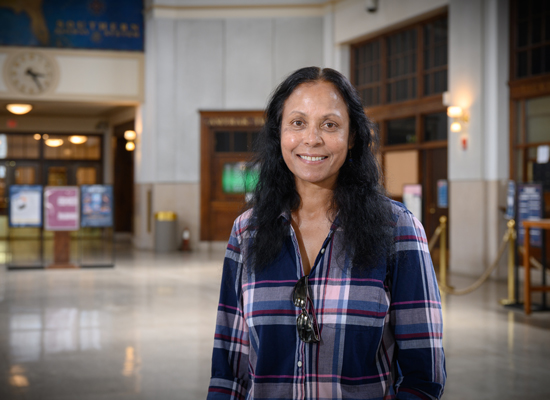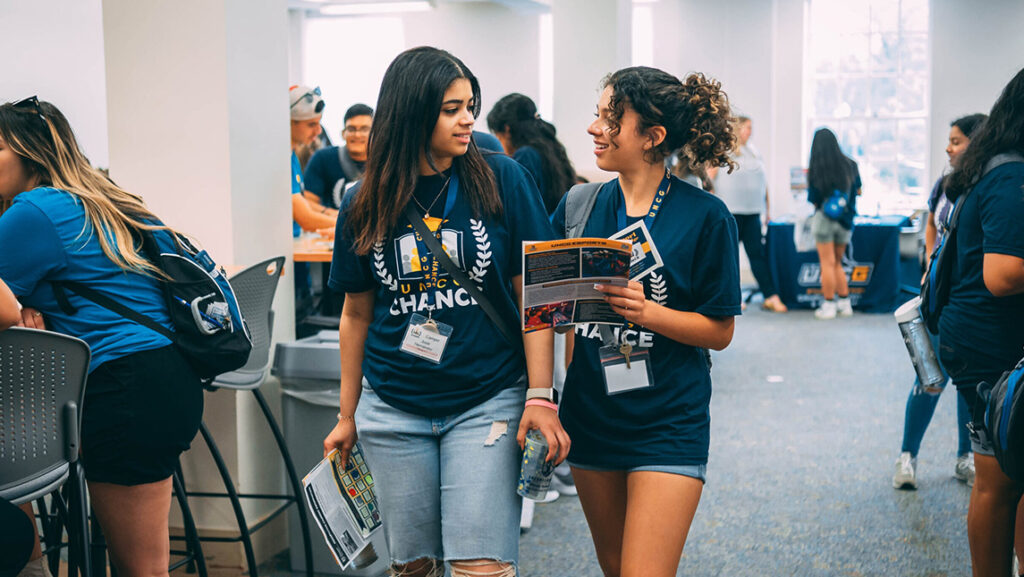
As the Senate moves closer to a bipartisan deal on $1.2 trillion for infrastructure projects, they have the support of automotive industry analysts, especially for the $7.5 billion budgeted for electric vehicle (EV) infrastructure, including charging stations.
At UNC Greensboro, a researcher who studies transportation is focused on not only if EV charging stations are established across the United States but how and where, so that they are accessible for everyone.
Dr. Selima Sultana, professor in the Department of Geography, Environment, and Sustainability and the author of “Minicars, Maglevs, and Mopeds: Modern Modes of Transportation around the World,” currently holds a UNCG Faculty First grant for her work that explores the emergence of EV vehicles in North Carolina.
Sultana sees EV expansion as an opportunity that combines sustainability and big business interests, but one that requires a closer look at accessibility and equity. What happens concerning EV infrastructure will affect not only urban and economic growth and the environment, but also accessibility, equity, and mobility – both physical and social.
“We’re in the middle of a societal transition, even though we may not realize it,” says Sultana. “In the next 15 to 20 years, probably everyone is going to have some kind of electric vehicle or an alternative fuel vehicle. But with this new development, we have to remember that equitable transportation access is fundamental for any opportunity – financial, social, recreational, everything.”

EV vehicles entered the American market in the 1990s because of the Clean Air Act, and that hastened the innovations of Tesla, Volvo, and other electric vehicle manufacturers. They moved into the mainstream in the early 2010s through the production of Nissan Leaf vehicles and other manufacturers.
For 35 years, Sultana says, sustainable transportation has been an ongoing conversation. With transportation creating one third of greenhouse gas emission that leads to climate change, researchers and the public have examined how changes in travel, modes of transportation, land use, and city design could address the problem. But now, as electric vehicles become more affordable, they are poised to make a tremendous impact in reducing the use of natural gas and carbon emissions, especially in the United States where car dependence is so much a part of daily life and city planning, as well freedom of movement, including recreation, for individuals.
PhD student Greg Carlton, Sultana’s advisee, is undertaking a project that evaluates the accessibility of EV charging stations, first in North Carolina, and then nationally. He says that because of EV rebate programs and used cars entering the market, they are now within the reach of average consumers, instead of only the wealthiest. However, EV charging station accessibility is still prohibitive. According to his preliminary research, the stations are mainly found in higher end shopping areas that may be difficult or inconvenient to reach for middle to lower income consumers, because of where they are in relation to where they live, or the types of businesses that host the stations.
“And this kind of exclusion happens every time a transportation innovation comes along,” says Carlton. “You deal with the social inequalities much later, when you should be dealing with them up front, every time we’ve had major transportation shifts. For instance, the Federal Highway Program back in the 1940s, and 50s, and 60s, when we built all these new interstate highways, this infrastructure always went to favor the people who are at the upper end of the economy.”
While a highway may be an advantage to upper income travelers, it can also cut through a neighborhood and reduce walkability and access to services for lower income travelers. He traces this tendency back to 19th and 20th-century developments as people first switched from horse-drawn carriages to automobiles.
Both Sultana and Carlton assert that while business interests, including job creation, will drive the spread of electric vehicles, to ensure accessibility for all, public charging stations must be placed strategically to serve the most users, not just according to business interests and private deals.
Currently there are more than 800,000 public charging stations in China and under 50,000 in the United States; with price tag being less of a consideration that it was 10 years ago, EV reluctance is more tied to the lack of charging infrastructure than car price itself.
“So, this is the negotiation that’s going on,” Sultana explains of the infrastructure deal. “There will be some compromise. But what we need to remember is that every time we change the technology, there can be a cost to lower-income families and individuals. Justice and equality in transportation is a big topic. So that’s where our research will be playing a role.”

Dr. Selima Sultana is the recipient of the 2019 SEDAAG Research Honors Award, for her publications and research leadership in the field of geography, and the 2021 Edward L. Ullman Award from the American Association of Geographers Transportation Geography Specialty Group (AAG TGSG), for her contribution to the field of transport geography. Named for the influential geographer Edward Louis Ullman, it is the most prestigious award in transportation geography offered by the AAG TGSG. Sultana’s numerous publications appear in journals such as Annals of the American Association of Geographers, Journal of Transport Geography, and Transport Policy, among many others. Her book titled “The Geography of National Park System” is slated to be published in early 2022 by the University of Georgia Press.
Story by Susan Kirby-Smith, University Communications
Photography by Martin W. Kane, University Communications


